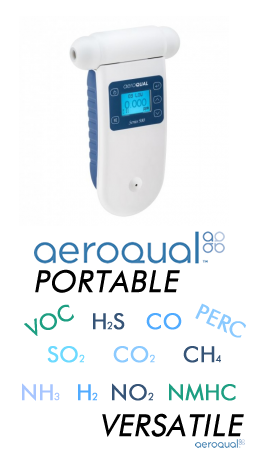Ammonia ChromAir Badge (380003-10)
ChromAir chemical exposure badges are a color indicating making them easy to use and perfect for monitoring personnel safety.
Quantity = 10 badges *clips are NOT included*
Note: we are not able to ship these badges outside of the US
Color change for Ammonia is from tan to black.
The ChromAir ammonia badge may be used for personnel or area monitoring for exposure times ranging from 5 minute to 16 hours.
Introduction
Ammonia is a colorless gas with a sharp, irritating odor. It is a typical respiratory and eye irritant. Depending on the concentration, it may cause burning sensations, wheezing, headaches, coughing, and conjunctivitis. High exposures cause caustic skin burns, eye swelling with possible loss of vision, shortness of breath and nausea. Ammonia causes chemical pneumonitis (deep lung inflamation) and pulmonary edema (abnormal fluid build up in the lungs). OSHA exposure limit for ammonia is 50 ppm (TWA). NIOSH exposure limit for ammonia is 25 ppm (TWA).
Ammonia is a commonly used chemical. As a product of normal biodegradation of bioproducts, it is spread as a pollutant in poultry plants and animal farms. Ammonia is used in the production of nitric acid, ammonia salts, fertilizers, leather, cooling and freezing systems, cleaning liquids, etc.
Principle of Operation
The ChromAir passive badge is a patented direct-read autogenic exposimeter. The monitor is constructed from six cells attached on one side to a flat indicator layer and on the other side to a series of different diffusive resistances. Ammonia gas diffuses to the cells through the different diffusive resistances and reacts with the indicator layer, producing color change from tan to beige to black. The color produced on the indicator layer is a direct measure of the exposure dose. Visual color comparison is achieved by observing the formation of the beige threshold color on the individual cell and reading the corresponding exposure dose.
Pictured above is the additional color comparator that is used for higher resolutions and accuracy (available for Carbon Monoxide, Formaldehyde, Mercury).
Operating Instructions
1. Remove the pouch from refrigerator and allow it to warm to room temperature.
2. Remove the badge from its protective pouch.
3. Enter all pertinent information on the I.D. label before monitoring is started (i.e. name, location, date and start time).
4. For personnel monitoring, attach the badge near the user's breathing zone (i.e. collar) with the front side exposed to the surrounding atmosphere.
5. For area monitoring, attach the badge to a stand and mount in a centralized area with the front side exposed to the surrounding atmosphere.
6. Check the back side of the badge periodically to determine the exposure dose (ppm•hr).
7. To read the badge, locate the highest level cell with beige threshold color.
8. To obtain the average concentration (ppm) in the surrounding atmosphere, divide the exposure dose (ppm•hr) by the exposure time in hours.
EXAMPLE: If the sampling time is 2 hours and the badge reads 4 ppm•hr, the average concentration is determined by: 4 ppm•hr Therefore the average concentration is 2 ppm.
Storage
The ChromAir ammonia monitor should be refrigerated in its sealed bag at all times.
Sampling Parameters
|
Color Change |
tan to black |
|
Exposure range |
4 - 300 ppm•hr |
|
Maximum recommended sampling time |
16 hours |
|
Minimum recommended sampling time |
5 minute |
|
Relative humidity range |
15% - 90% |
|
Face velocity range |
10 - 165 cm/sec |
|
Temperature range |
10ºC - 40ºC (50ºF - 104ºF) |
|
Light effect - UV (direct sunlight) |
not recommended (The back of the badge [viewing area] should not be exposed to direct sun light at any time) |
|
Light effect - visible |
no effect |
|
Refrigerated Shelf Life |
1 year |
Downloads and Links
| Manufacturer | Morphix |
|---|---|
| Call For Price | No |
| Gas | Ammonia (NH3) |
| Standard Range | 4 - 300 PPM hr |
| Operational Temperature Range | 10ºC - 40ºC (50ºF - 104ºF) |
| Operational RH Range | 15% - 90% |
| Audible Alarm | No |
| Calibration | N/A |
| Sensor Life | 16 Hours |
| Range | 4-300 ppm-hr |
| Unit Features | - Read exposure dose results directly from the badge - Determine exposure dose throughout sampling period - Detection with practical and relevant range - Use for Short Term Exposure Limit (STEL) or Time Weighted Average (TWA) |
| Sensor Range | 4-300 ppm-hr |


















